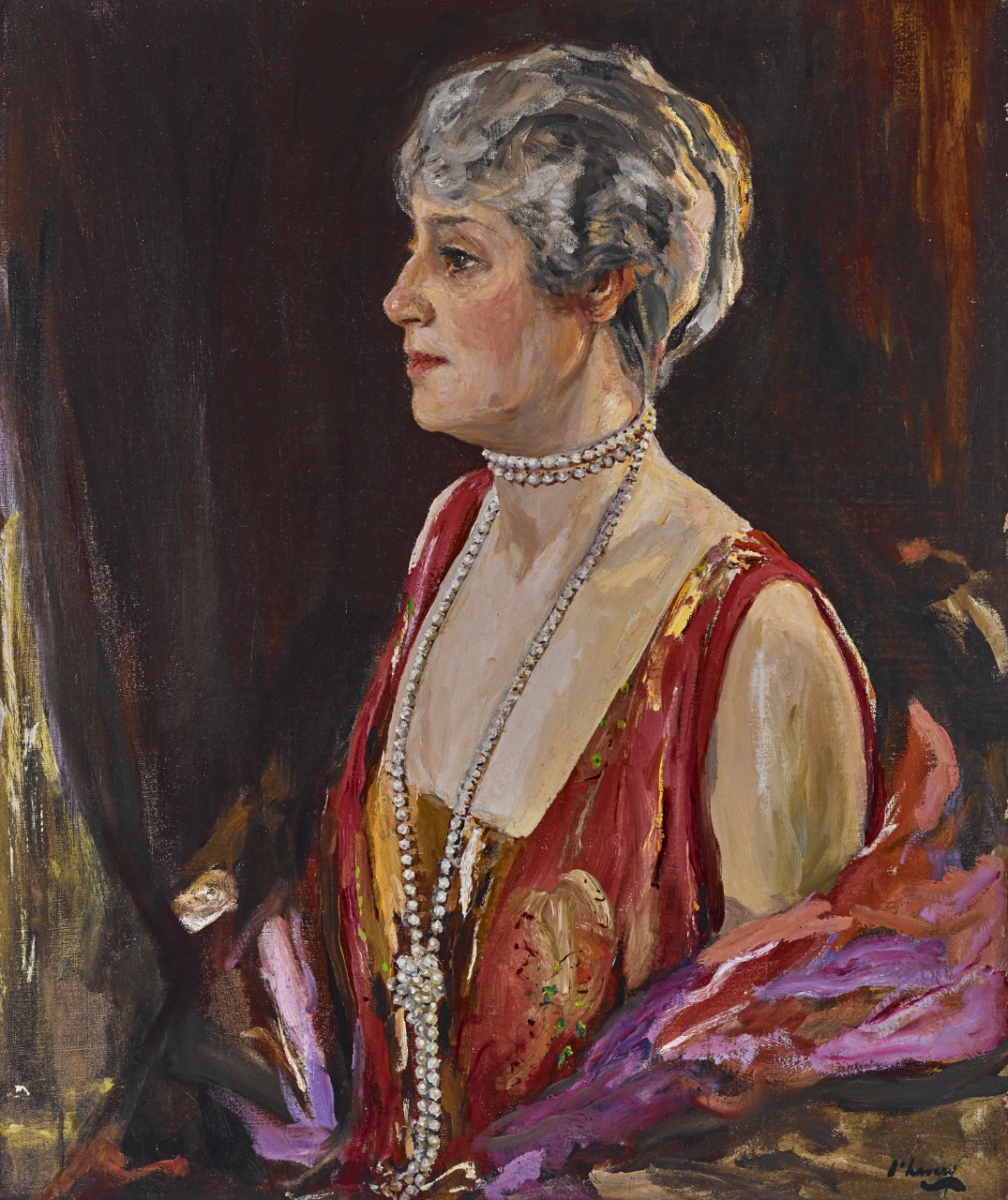Researching Columbia's Portraits
 "Portrait of Kate LaMontagne Butler (Mrs. Nicholas Murray Butler)," Sir John Lavery (1927)
"Portrait of Kate LaMontagne Butler (Mrs. Nicholas Murray Butler)," Sir John Lavery (1927)
The collection of art owned by Columbia University, collectively known as Art Properties and held by Avery Architectural and Fine Arts Library, includes more than 12,000 works in various media, from oil paintings and pottery to pencil drawings and large-scale sculptures. The Thinker, the iconic sculpture by Auguste Rodin that resides outside Philosophy Hall, is a part of Art Properties, as are the paintings that line the walls of Butler Library. Lesser known, perhaps, though no less intriguing, are the four portraits that serve as the focal point of Avery’s current exhibition, “Hoppner, Beechey, Fisher, Lavery: Researching Columbia’s Portraits,” on display through May 10, 2019.
Co-curated by Roberto Ferrari, Curator of Art Properties, and Mateusz Mayer, ‘22GSAS, a Ph.D. student in art history and archaeology, the exhibition provided an opportunity for close study of works that were rarely - if ever - examined before by art historians. The paintings, by British artists John Hoppner, Sir William Beechey, William Fisher, and Sir John Lavery, provide distinct examples of British portraiture and span more than 100 years. (The earliest, Hoppner’s Portrait of Isabella Ricketts, later Mrs. Stanlake Henry Batson, was painted circa 1800 - 1801 and the most recent, Lavery’s Portrait of Kate La Montagne Butler (Mrs. Nicholas Murray Butler), dates to 1927.) Little was known about the works’ origins, the artists, or their subjects, so Ferrari and Mayer turned to the Columbia Libraries’ collections to learn more.
“I spent many hours reading books at Avery, trying to find out as much as possible about the sitters and painters, but I also looked through the extensive archival holdings of the University Archives in Butler to fill in crucial gaps in the paintings’ provenances,” Mayer said of his research into Fisher’s Portrait of Walter Savage Landor and Lavery’s Portrait of Kate La Montagne Butler.
In particular, unpublished correspondence between Lavery and President Nicholas Murray Butler, who led Columbia for more than 40 years (1902 - 1945), regarding his wife’s portrait proved especially useful to Mayer’s study of the painting.
“Written in the 1920s, these letters have never been touched by an art historian before, allowing me to uncover how the commission of the portrait of Mrs. Butler really came about, thanks to an initiative of the Women's Faculty Club that existed at Columbia between 1913 and 1972,” said Mayer. “The University Archives were an invaluable treasure trove and I was so grateful for our archivists’ indefatigable support and help in locating pertinent archival material.”
It was another unnoticed “treasure” of the Libraries’ collections, an eighteenth-century portrait of philosopher David Hartley by British painter George Romney in Art Properties, that prompted Mayer’s partnership with Ferrari. Mayer came across the portrait during the course of his research for a graduate seminar on British art and was “so taken by it that I decided to write my seminar paper on it.” Mayer, who plans to pursue a minor in British art, was thrilled by the opportunity several months later to co-curate an exhibition of “under-studied British portraits from Columbia’s collection.
“The exhibition allowed me to apply my academic training in art history and to expand my previous curatorial experience by working with original British artworks for the first time,” said Mayer. “Roberto was a fantastic, empowering, and extremely knowledgeable mentor and I learned a great deal about curatorial practices in the United States, the history and management of Columbia’s art collection, and how such a vast collection is documented and publicized within a university context.”
With Ferrari’s guidance, Mayer navigated the Libraries’ vast archival collections to piece together the histories behind the chosen works, beyond the brushstrokes and the sitter’s gaze, to glean some detail about the places and times that the portraits were painted.
“Just like modern, Photoshopped portrait photography, historic portraits show us an idealized version of the sitters,” said Mayer. “But they often convey specific deeper meanings and provide unique glimpses into the past. As art historians we try to reveal these implied messages. That's why I love art history so much - it's like being a detective!”